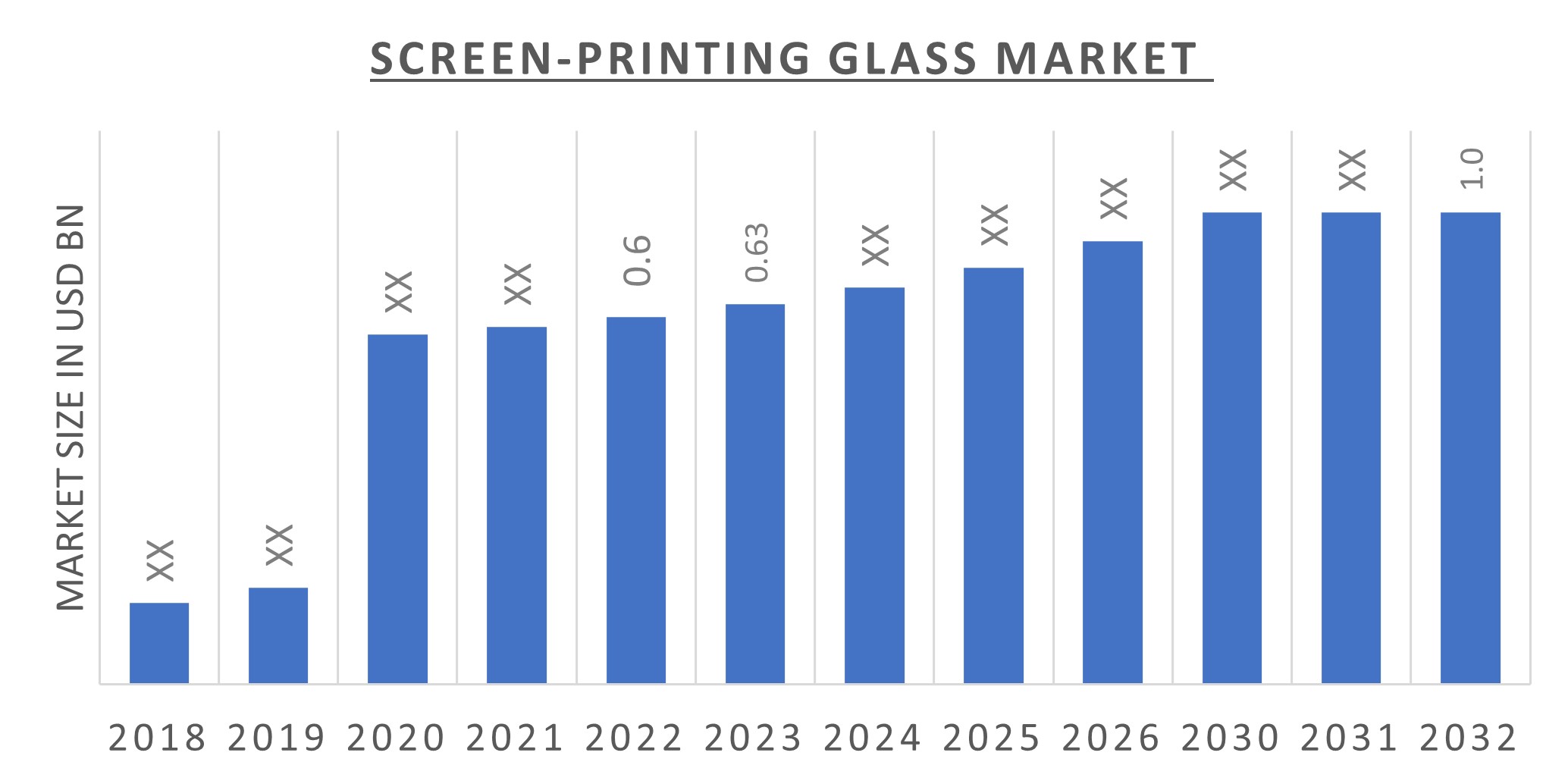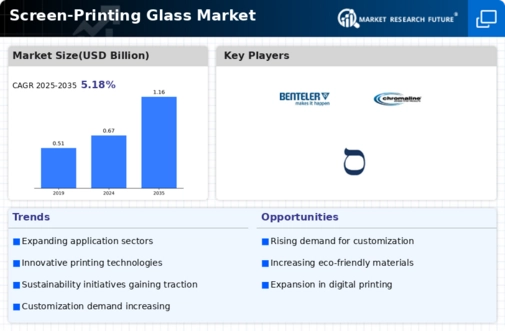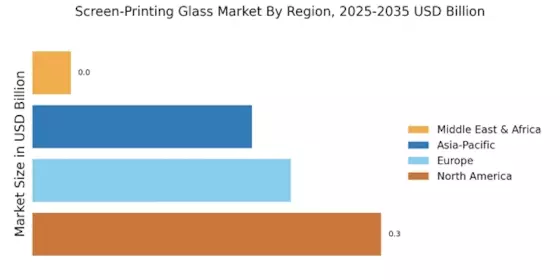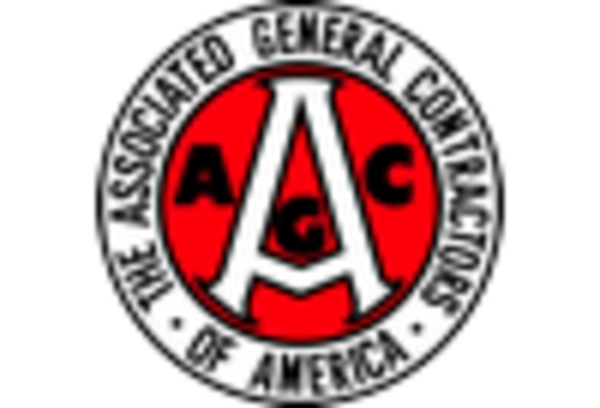Expansion of the Automotive Sector
The Screen-Printing Glass Market is significantly influenced by the expansion of the automotive sector. With the increasing production of vehicles, there is a corresponding rise in the demand for specialized glass components, including printed glass for branding and safety features. Recent statistics indicate that the automotive glass market is expected to grow at a rate of 5% annually, which directly impacts the screen-printing segment. Automotive manufacturers are increasingly utilizing screen-printed glass for windshields and windows, as it allows for intricate designs and functionalities. This trend not only enhances vehicle aesthetics but also contributes to safety and brand recognition, thereby driving growth within the Screen-Printing Glass Market.
Rising Demand for Decorative Glass
The Screen-Printing Glass Market is experiencing a notable increase in demand for decorative glass products. This trend is driven by the growing interest in interior design and architecture, where customized glass solutions are sought after for aesthetic appeal. According to recent data, the decorative glass segment is projected to grow at a compound annual growth rate of approximately 6% over the next five years. This growth is attributed to the rising consumer preference for unique and personalized designs, which enhances the overall ambiance of residential and commercial spaces. As a result, manufacturers in the Screen-Printing Glass Market are focusing on innovative printing techniques to meet this demand, thereby expanding their product offerings and enhancing market competitiveness.
Growth in the Construction Industry
The Screen-Printing Glass Market is benefiting from the robust growth in the construction sector. As urbanization continues to rise, there is an increasing demand for glass products in both residential and commercial buildings. The construction industry is projected to grow at a rate of 4% annually, leading to a heightened need for decorative and functional glass solutions. Screen-printed glass is particularly favored for its ability to provide both aesthetic appeal and energy efficiency. Architects and builders are increasingly incorporating screen-printed glass into their designs, recognizing its potential to enhance building performance and visual impact. This trend is expected to drive substantial growth in the Screen-Printing Glass Market over the coming years.
Consumer Preference for Eco-Friendly Products
The Screen-Printing Glass Market is witnessing a shift in consumer preferences towards eco-friendly products. As awareness of environmental issues grows, consumers are increasingly seeking sustainable glass solutions that minimize ecological impact. This trend is prompting manufacturers to adopt greener practices, such as using non-toxic inks and recyclable materials in the screen-printing process. Recent surveys indicate that a significant percentage of consumers are willing to pay a premium for environmentally friendly products, which is likely to influence purchasing decisions. Consequently, companies that prioritize sustainability in their offerings are expected to thrive in the Screen-Printing Glass Market, as they align with the values of a more environmentally conscious consumer base.
Technological Innovations in Printing Techniques
Technological advancements are playing a crucial role in shaping the Screen-Printing Glass Market. Innovations in printing techniques, such as digital printing and automated screen printing, are enhancing production efficiency and product quality. These advancements allow for more intricate designs and faster turnaround times, which are essential in meeting the evolving demands of consumers. The market is witnessing a shift towards more sustainable printing methods, which not only reduce waste but also lower production costs. As a result, companies that adopt these technologies are likely to gain a competitive edge, positioning themselves favorably within the Screen-Printing Glass Market. The integration of smart technologies is also anticipated to further revolutionize the sector.


















Leave a Comment